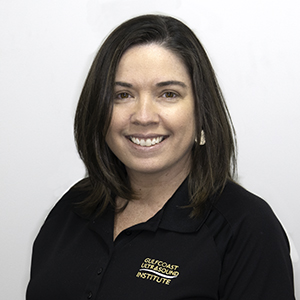Click image to view video.
Peripheral nerves are affected by a multitude of disease processes including trauma, infection, inflammation, tumors (benign or malignant) and entrapment neuropathies. Ultrasound is an effective and low-cost modality that can detect and characterize these various pathologies as well as provide guidance for interventional procedures. In order to utilize ultrasound in an effective manner, you must become familiar with the detailed anatomy and sonographic appearance of the nerves.
A normal nerve, in a transverse scan plane, appears as a small “honeycomb” with hypoechoic (darker) areas separated by hyperechoic (brighter) septae. On dynamic examination, the nerves show sliding movement over the muscles and tendons. An altered movement or contour deformity during this sliding movement gives us a clue to diagnose pathology.
Carpal tunnel syndrome, the most common entrapment neuropathy which occurs due to compression of the median nerve in the carpal tunnel, can be accurately diagnosed with ultrasound. In fact, ultrasound has proven to be comparable with nerve conduction studies in the diagnosis of carpal tunnel syndrome. It shows the classic triad of enlargement of the nerve at the level of the distal radius and proximal carpal tunnel and flattening of the nerve in the distal carpal tunnel.
Ultrasound can also detect extrinsic causes of entrapment neuropathy like tenosynovitis or space-occupying lesions like ganglion or tumors. Zaidman et al. have reported that ultrasound has a higher sensitivity and equivalent specificity as compared to MRI, and also detects multifocal nerve lesions better than MRI, and should be the preferred initial modality in the anatomic evaluation of suspected peripheral nerve lesions.
Ultrasound also offers a number of important advantages for interventional techniques. It allows the visualization of the anatomy of the region of interest and the needle pathway to the target, helping to avoid structures that may be damaged by the needle. And most importantly, it allows for continuous visualization of the local anesthetic solution delivery to ensure proper distribution and potential adjustment of the needle tip to optimize distribution.
Ultrasonography has revolutionized the diagnosis and treatment of peripheral nerve disease. However, the effective application of this technology requires understanding of two-dimensional anatomy, optimal imaging of the nerves and anatomical structures, accurate real-time needle guidance and precise local anesthetic delivery to ensure the most benefit from this powerful modality.
Gulfcoast Ultrasound Institute is offering a live Peripheral Nerve Course at our state-of-the-art educational facility in sunny St. Petersburg, Florida. This comprehensive program is designed to provide learners with the knowledge and hands-on skills needed to utilize ultrasound in the assessment and treatment of peripheral nerves.
The course features two separate tracks to address diagnostic and therapeutic applications for neurology-based and interventional-based specialty applications. Taught by expert faculty including Jeff Strakowski, MD (Course Director), Jon Jacobson, MD, RMSK, Katharine Alter, MD and Craig Chappell, DO, RMSK, this course includes comprehensive lectures and extensive hands-on scanning workshops with an industry leading 3:1 participant to faculty ratio. The scan workshops provide the participant the opportunity to scan live models as well as cadaveric specimens for interventional procedures and injection techniques practice, allowing the participant to immediately implement skills learned into clinical practice.
References:
Zaidman CM, Seelig MJ, Baker JC, Mackinnon SE, Pestronk A. Detection of peripheral nerve pathology: Comparison of ultrasound and MRI. Neurology. 2013;80:1634–40.
(727)363-4500
|
CREATE ACCOUNT
|
LOG IN
|
CART
|
Item(s) added to cart
Proceed to Checkout
Continue Shopping


